Policy tweaks can tap pharma investment trends
Quality pharmaceutical products are more affordable and accessible for patients, which has its roots from the growing number of retail outlets to approximately 62,000 outlets, together with the government’s launching of projects, and programmes to improve medical services such as the Antimicrobial Resistance Programme since 2018, the Youth Health Programme from 2019-2021, and many others.
 |
| Duong Thi Mai Hoa, Managing partner Indusviet Legal LLC |
The domestic pharmaceutical industry is beginning to be prioritised for development, especially in areas of clinical pharmacy, manufacturing facilities, and related personnel via the promulgation of various policies.
For manufacturing facilities in particular, Vietnam’s pharmaceutical ecosystem is becoming more developed and very strongly linked with the increasing number of manufacturing factories, reaching the number of 250 factories and 200 exporting and/or importing facilities.
Nevertheless, there exist challenges for Vietnam to face, remedy, and improve for the increase in attracting foreign funding. This includes the lack of a breakthrough in vision, infeasible legal policies, and complicated administrative procedures.
In the past couple of years, nations have shifted their focus to health, medicine, and pharmacy and finding new, novel approaches. As a result, the investment trend into pharmaceuticals with an emphasis on technology transfer is beginning to take a clearer shape.
Vietnam has made major strides in establishing policies and amending legislation in an attempt to provide guidance and reinforcement to the development of Vietnam’s pharmaceutical industry. This includes Decision No.376/QD-TTg approving the development programme for the industry towards 2030 and with a vision to 2045, promulgated in March 2021.
One of the prominent points of Decision 376 is that the global trend of developing technology transfer in the industry is reflected in its contents. Subsequently, it sets out a specific target for technology transfer by 2030 to transfer production technology of at least 100 innovator drugs with valid trademarks, vaccines, medical biologicals, and medicine which Vietnam has not been able to produce.
Incentive policies for the pharmaceutical industry are also being recognised as the government shall prioritise investments in these areas as well as in scientific research, production of new medicines, quality herbal ingredients, and development of herbal ingredients of national brands.
In practice, investment in pharmaceuticals is also starting to see a transition. At the beginning of 2022, Indian enterprises entered into an MoU on funding Vietnam-India Pharmaceutical Park with Dai An Urban-Industrial Zone Development Corporation in the northern province of Hai Duong.
With the total capital reaching $10-12 billion, this project is expected to be a strategic lever to propel Vietnam to become a leading pharmaceutical research, development, and manufacturing institute in Southeast Asia.
Apart from Indian enterprises, a plethora of multinational corporations such as Sanofi and Nipro Pharma are expected to continue pouring money and increasing their presence in Vietnam.
Despite a transition in the legal policies of Vietnam in providing more incentives for better attraction of foreign capital, such policies, nonetheless, prove insufficient in the long run for investors to cope with the complicated or unspecified legal procedures in Vietnam as well as the humbleness of objective aspects on manufacturing facilities, materials, personnel, and policies on domestic drug prices.
An illustration of this is the lack of specific guidance on technology transfer. Tech transfer in pharma is currently receiving massive worldwide support. However, in Vietnam, multiple pharma enterprises and corporations are currently complaining about this activity. This mainly stems from the non-uniformity and lack of clarity of the administrative procedures, thus making foreign investors and major pharma companies hesitant to invest in Vietnam.
Even with the promulgation of the Law on Technology Transfer in 2018, there is yet to exist any provision expressively stipulating the procedures and process of pharma tech transfer in Vietnam.
The Ministry of Health has drafted a circular guiding the activity of drug processing and technology transfer in drug manufacturing as a replacement to a 2013 circular guiding the activity of drug processing. But currently, this circular is yet to be approved, thus effectively leaving a gap in the legal framework.
Therefore, the Vietnamese government is required to promulgate legal stipulations quickly to guide implementation. In addition, it is essential for other provisions on intellectual property, drug price policies, and the orientation on the use of generic drugs to become harmonised, as their discordance has created barriers restricting the technology transfer of drug manufacture.
For better implementation of the investment trend in this day and age, not only does Vietnam need to rapidly promulgate, amend or supplement the necessary legal framework, but it is also wise for Vietnam to learn from the experience of countries of which pharmaceutical industries have become developed on overseas capital such as Singapore and South Korea.
These countries have established notable research and development institutions such as the Biomedical Park Tuas of Singapore and Osong High-tech Medical Complex of South Korea, so as to create a stable and reliable pharmaceutical ecosystem, thus demonstrating a closely linked web within the industry. They also offer methods in training personnel with very high expertise, for example with Singapore’s Workforce Skill Qualifications.
If Singapore and South Korea are success stories in pharmaceuticals with foreign-based capital, India is successful by relying on both its domestic resources and its transition of the trend in attracting foreign investors with appealing policies.
India has established new projects that are under 100 per cent “automatic route”, meaning that no governmental approval is required for making the investment; overseas capital for existing projects via mergers and acquisitions with investment up to 74 per cent shall also be under similar treatment. However, for foreign funding above 74 per cent, such projects will be under the “approval route”, meaning that governmental approval is required.
Thus, from the experience of other countries, the solutions for Vietnam shall be the changing of policies and legislation for attracting investment to be simpler and with better probability, similar to what many countries have done while simultaneously focusing on optimising financial incentives for the promotion of inland manufacture and training of high-quality personnel. It must also create sources of materials for drug manufacture to become effective levers for Vietnam to build strong domestic pharmaceutical power. Such solutions are the foundation for creating a sustainable and effective funding environment for foreign investors.
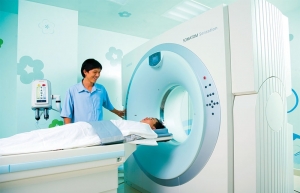 | Pharma groups step up competition More international pharma and medical device businesses are rushing to venture further in Vietnam, anticipating wide growth potential. |
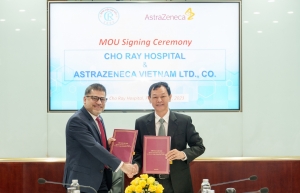 | Pharma giant extends partnership with Cho Ray Hospital AstraZeneca Vietnam and Cho Ray Hospital signed an MoU in February to extend their commitment to improving healthcare innovation in southern Vietnam until 2025. |
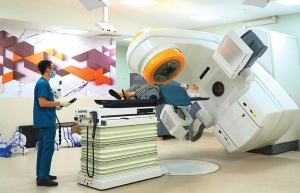 | Top pharma names advocate for sweeping legal revamps With the Ministry of Health’s latest pledge to improve upon medical legislation, international businesses continue to pin high hopes on marketing authorisation regulations for medical devices and distribution rights in order to drive their plans forward. |
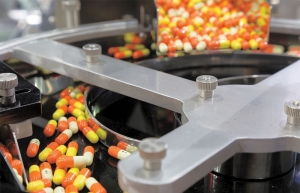 | Multinational pharma groups keen on robust partnerships After making gains in 2022, multinational corporations will prioritise strengthening local partnerships to support their ambition of transforming the treatment landscape – but they are also pleading for further legal clarity. |
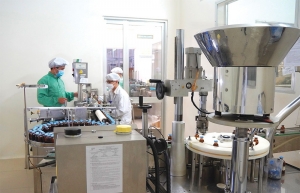 | Indian pharma groups look to local manufacturing When the Law on Pharma came into effect in 2016, most Indian pharma companies imported drugs from India and Europe into Vietnam. Some companies only registered drugs in Vietnam and transferred other Indian or Vietnamese pharma companies to sell. |
What the stars mean:
★ Poor ★ ★ Promising ★★★ Good ★★★★ Very good ★★★★★ Exceptional
Themes: Healthcare Platform
- Takeda Vietnam awarded for ongoing support of Vietnam’s sustainability efforts
- Self-care signals shift towards sustainable healthcare
- DKSH to acquire Vietnamese healthcare distributor Biomedic
- Two national hospitals expand capacity with new facilities
- Vietnam moves to enhance disease prevention, equity, and sustainability
Related Contents
Latest News
More News
- Main drivers for Vietnam’s digital economy future (December 03, 2025 | 11:35)
- Pivotal stage of growth paves way for rise in M&As (December 03, 2025 | 10:00)
- Positive projections for M&A interest from Thailand (December 03, 2025 | 09:40)
- Manifesting the first line of defence in cybersecurity (December 03, 2025 | 09:00)
- The transformational role AI can play in accounting arena (December 03, 2025 | 08:00)
- Unlocking 5G-AI potential in Singapore (December 03, 2025 | 08:00)
- Data-driven strategies vital for a fast-evolving nation (December 02, 2025 | 09:41)
- Policy to practice: how Vietnam can lead the region (November 26, 2025 | 16:03)
- Mobilising private capital at scale vital for climate battle (November 26, 2025 | 15:36)
- VILAF and Yoon & Yang launch Vietnam - Korea Practice Unit (November 26, 2025 | 15:16)

 Tag:
Tag:





















 Mobile Version
Mobile Version